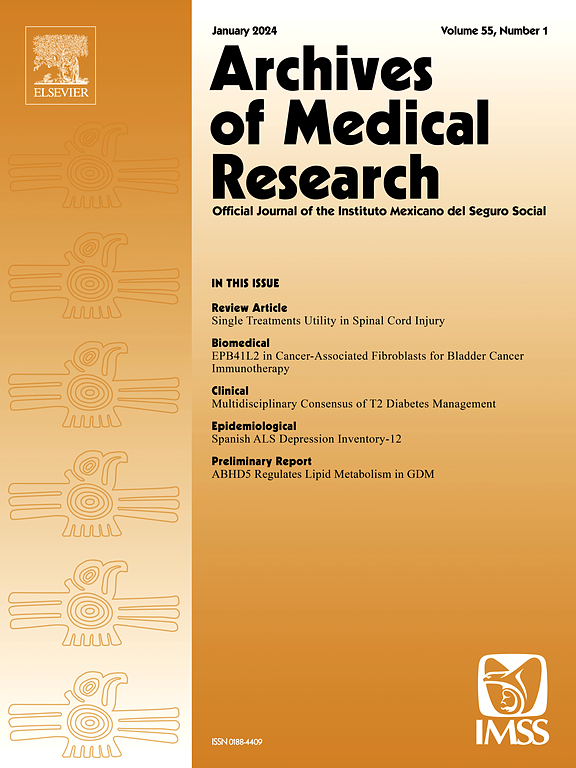墨西哥Juárez市工作场所人类乳头瘤病毒自采样试点项目的评价
IF 3.4
3区 医学
Q1 MEDICINE, RESEARCH & EXPERIMENTAL
引用次数: 0
摘要
目的了解墨西哥Juárez市工厂女工实施工作场所人乳头瘤病毒自采样试点(HPV-SS- pp)前后宫颈癌筛查(CCS)覆盖率和随访情况,并将HPV-SS与传统宫颈细胞学筛查(巴氏涂片法)进行比较。方法采用墨西哥社会医学研究所(IMSS)癌症登记处、HPV-SS-PP登记处和IMSS隶属数据库进行二次分析。这项研究的重点是居住在古巴城Juárez的年龄在35-64岁的imss附属职业女性。我们检查了HPV-SS-PP前38个月和后12个月CCS覆盖率的趋势。我们还检查了HPV阳性妇女的HPV患病率和随访指标。研究发现,44.8%的工厂和42.7%的妇女接受了HPV-SS-PP计划,导致CCS覆盖率最初增加,随后放缓。HPV-16/18基因型患病率为5%,hpv -池患病率为18.1%。宫颈细胞学随访中hpv池检测阳性的女性为39.7%。阴道镜和组织病理学随访中HPV-16/18基因型和HPV-pool的阳性率为中高(阴道镜64.8%和84.7%,组织病理学随访87.8和93.2%)。结论HPV- ss - pp需要改进,以增加职业妇女参与CCS,并确保HPV阳性结果的更好随访。本文章由计算机程序翻译,如有差异,请以英文原文为准。
Evaluation of the Pilot Human Papillomavirus Self-Sampling Program in Workplaces in Ciudad Juárez, Mexico
Objective
To examine cervical cancer screening (CCS) coverage and follow-up before and after the introduction of the workplace Human Papilloma Virus self-sampling pilot program (HPV-SS-PP) for female factory workers in Ciudad Juárez, Mexico and to compare HPV-SS with conventional cervical cytology screening using the Papanicolaou (Pap) smear method.
Methods
A secondary analysis was conducted using the Instituto Mexicano del Seguro Social (IMSS) cancer registry, the HPV-SS-PP registry, and the IMSS affiliation database. The study focused on IMSS-affiliated working women aged 35–64 living in Ciudad Juárez. We examined trends in CCS coverage during the 38 months before and the first 12 months after the HPV-SS-PP. We also examined HPV prevalence and follow-up indicators for HPV-positive women.
Results
The study found that 44.8% of factories and 42.7% of women accepted the HPV-SS-PP program, leading to an initial increase and subsequent slowdown in CCS coverage. The HPV-16/18 genotype prevalence was 5%, and the HPV-pool prevalence was 18.1%. Follow-up for cervical cytology among women testing positive for the HPV-pool was 39.7%. Colposcopy and histopathology follow-up for HPV-16/18 genotypes and HPV-pool were moderate to high (64.8 and 84.7% for colposcopy, 87.8 and 93.2% for histopathology follow-up, respectively).
Conclusion
The HPV-SS-PP requires improvements to increase working women’s participation in CCS and ensure better follow-up of positive HPV results.
求助全文
通过发布文献求助,成功后即可免费获取论文全文。
去求助
来源期刊

Archives of Medical Research
医学-医学:研究与实验
CiteScore
12.50
自引率
0.00%
发文量
84
审稿时长
28 days
期刊介绍:
Archives of Medical Research serves as a platform for publishing original peer-reviewed medical research, aiming to bridge gaps created by medical specialization. The journal covers three main categories - biomedical, clinical, and epidemiological contributions, along with review articles and preliminary communications. With an international scope, it presents the study of diseases from diverse perspectives, offering the medical community original investigations ranging from molecular biology to clinical epidemiology in a single publication.
 求助内容:
求助内容: 应助结果提醒方式:
应助结果提醒方式:


